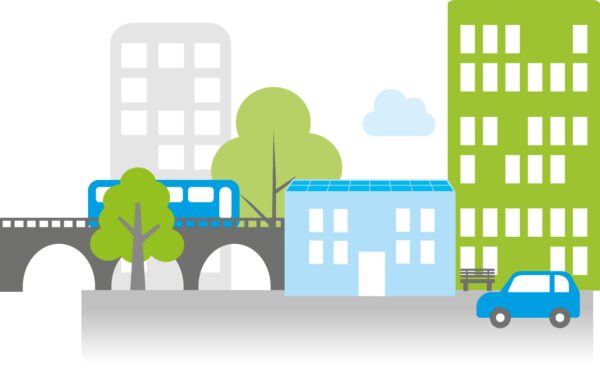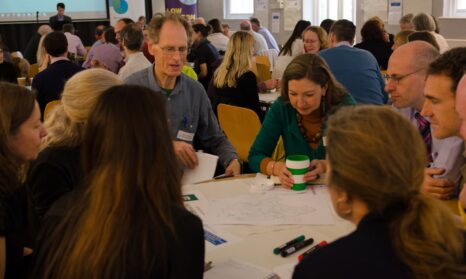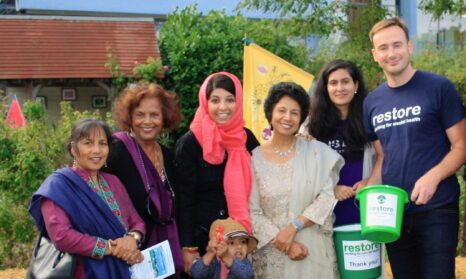Creating your action plan: How small and medium-sized organisations can tackle the climate and ecological emergency
“’It’s just one plastic straw’, said 7 billion people” is a powerful slogan I’ve seen recently. Our collective ability to damage the planet is undeniable. But, on the flip side, our collective ability to protect it is immense.
You should never feel too small to make a difference. But we know it can feel overwhelming - where do you start? What can you achieve? How do you get staff onboard?
Why One Planet Living?
One Planet Living is our vision of a better future. If everyone lived as the average European does, we’d need three planets’ worth of resources to support us. This isn’t sustainable and it’s also not right – there are people in this world who use far less than their ‘fair share’ of resources.
So, in 2003, we launched our One Planet Living framework. It’s designed to help anyone, anywhere, create an ambitious yet achievable route map towards a world where we all live happy, healthy lives within the planet’s limits.
It works at all scales – we’ve seen it used by cities, big businesses and large-scale new build developments, schools, community groups and even individuals. Check out our guides for all audiences if the mini toolkit isn't right for you.
Based on ten simple principles, the framework enables you to:
- create a joined-up sustainability action plan known as a ‘One Planet Action Plan’ covering all aspects of sustainability – from health and happiness to nature, and transport to zero-carbon energy
- communicate what you’re doing
- get all your stakeholders onboard.
How does the mini toolkit work?
Our new mini toolkit is a manual to help you build your sustainability action plan, using the ten principles.
It’s based on more than a decade of experience working with our different partners to use One Planet Living to revolutionise their approach to sustainability. The toolkit is brimming with advice to guide small and medium-sized organisations (including businesses, schools and charities) so they can create their own, bespoke One Planet Action Plan.
This plan will outline:
- what you want to achieve (outcomes)
- how you’ll achieve these (actions)
- how to measure progress (indicators).
The mini toolkit is highly flexible - if anything doesn’t work for you, our advice is to change it. We believe that the best person to know what works for you – is you!
There are five main steps:
- Decide One Planet Living is the right approach for you
This is a commitment that must involve whoever is in charge. Although developing a One Planet Action Plan will be led by one person (probably whoever is reading this now!) or a small team, success rests on leadership from the top.
Luckily, it’s easy to get people inspired by One Planet Living. Unlike other frameworks, it makes sustainability accessible and offers a highly flexible approach that neatly brings any existing environmental policies together.
Sustainability, of course, has other benefits – like saving money through increased energy-efficiency and enhancing your reputation as an organisation that’s taking the climate and ecological crisis seriously. The toolkit details these benefits to help you make a case. - Understand your context
Once you’ve got agreement to proceed, it’s important to start by understanding where you are now. This includes looking at your current environmental impact, any existing sustainability initiatives, and exploring what your role in creating a better future will look like.
This information will provide a useful basis for the next step, where things really get fun… - Run a One Planet Living workshop
We recommend running a half-day workshop with relevant colleagues and stakeholders. Depending on your organisation, you could even involve your customers, other service users or students.
It’s designed to establish a solid foundation by building the structure and content for a One Planet Action Plan by:
- gathering all the right people in a room
- collating their expertise
- making them feel involved.
The mini toolkit guides you through the entire workshop and includes a comprehensive agenda. You’ll end up with ideas for outcomes (what you want to achieve) and actions (how you’ll achieve them). - Add detail
Now it’s time to get your teeth stuck into fleshing out and refining the outcomes and actions you gathered at the workshop and adding structure by:
- Considering whether they are achievable
- Combining any similar ones
- Adding anything that’s been missed
This is also where you’ll develop indicators for measuring progress towards the outcomes and pinpointing a local benchmark or your current baseline to know if things are getting better.
We encourage you to create and publish your plan on the digital platform we have created: oneplanet.com. - Implement and monitor
Here, we outline how some upfront effort will be the difference between success and struggle by:
- Embedding sustainability into all your processes and operations, making the sustainable choice the easy choice
- Engaging and training staff to ensure they support the outcomes and understand how to achieve them.
The toolkit also shares advice so you can monitor and report annually on your progress – helping you see what’s working (and what’s not), as well as collate impact and stories to share externally.
Creating a plan is the beginning of a journey that will benefit your organisation, your staff and the planet immeasurably. Don’t be the organisation that gets left behind as your peers get ahead of the sustainability curve.
It’s just one sustainability action plan. But it’s one that can play its part in changing the world.
We're running a workshop in Oxfordshire on 25 Feb 2020 to support SMEs to create a sustainability strategy using One Planet Living - register via Eventbrite.
One Planet Living mini toolkit for small and medium-sized organisations
Our One Planet Living mini toolkit will help you create a One Planet Action Plan that embeds sustainability within your organisation and helps you move towards a better, more sustainable future
Download PDF







